Meta data from IMDB: 1 hour and 17 minutes 6.7/10 from 2263
Hard Rock come to San Angelo in a big way. The bigger they are, the harder they fall; the more they fall, the more of them there are. Figure that out.
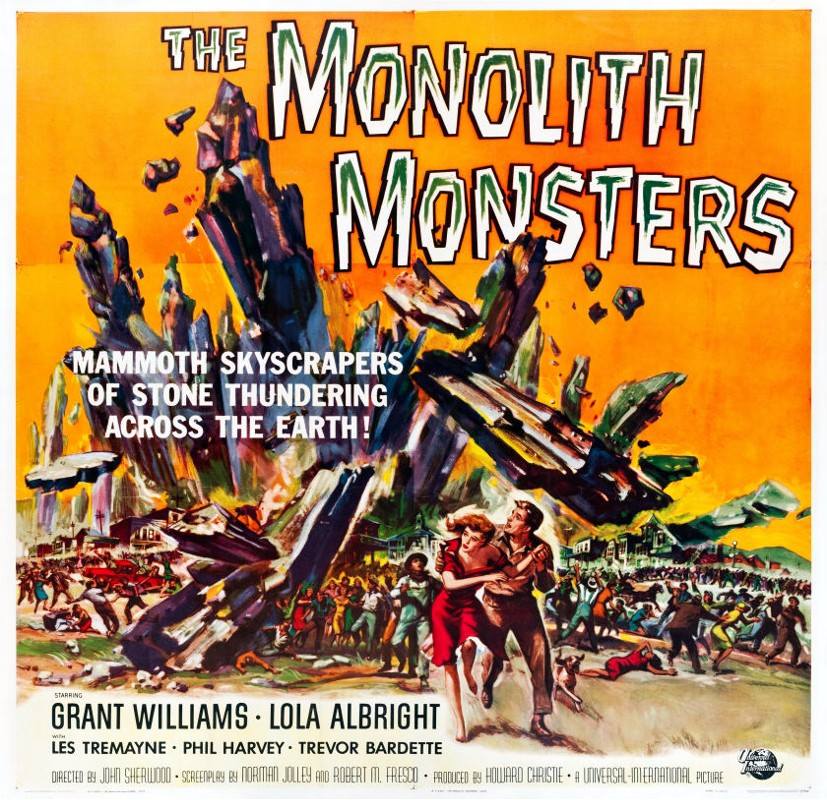
Monoliths, yes; monsters, no. This is a creature feature without a creature. Just the sort of thing that confuses the fraternity brothers.
These monoliths missed Stonehenge and Carnac and hit the desert Southwest as so much Sy Fy did in the 1950s. A r-e-a-l-l-y big meteor hits the desert. Boom!!!!!
No one notices. Richard and Babs from ‘It Came from Outer Space’ (1953), reviewed elsewhere on this blog, usually spot meteors but they must have at their anatomy lessons.
A park ranger finds a rock chip on the road. It looks different. Odd. He takes it back to the office. Too bad.
This first act is very classy. the ranger stops the car to take a look. He uses a rock to chock the wheel of his vehicle on the slope without a thought. Then when it is time to go, he kicks it away and notices its peculiarity. He tosses into the car for subsequent examination.
Back in town he takes his kit and the rock into the office, which has been closed all day in the hot sun and he opens up the door transom and the back window for the air. This is all so brisk and natural that it hardly seems a prelude. But every one of his actions has unforeseen consequences.
Spoilers below.
Later he kips on a cot in a side room and, as it does in the desert, it rains hard and water blows in from the back window onto Rocky lying on the work bench.
Next morning his offsider, the affable Grant, comes back from a road trip and finds the back room a shambles and his buddy….. standing in for Lot’s wife — petrified.
Bad. Inexplicable. Much Geordie speak about rocks, which did not remind me at all of the Geology lab I did as an undergraduate. Nothing would. Gone.
Conclusion? Rocky did it! Others fall victim to Rocky and his friends. Worse.
Edie’s prize pupil goes all ‘Them!’ and is rushed to LA and an iron lung kept on standby for Sy Fy movie use. More Geordie speak about carbon, silica, and pancetta. Who knows?
Rain on the rocks makes them grow into monoliths. Nice skyline shots of monoliths against the desert sky painted on a travelling matte. Tourist attraction in the making, but then….crash they fall over and fragment. Each fragment grows into a monolith in the rain and then falls over. Thus do they at once proliferate and move. They are mindless and destructive. Reminds me of some people I know.
A call to Mr Pomfritt, doing a summer job at the weather bureau, says more rain is coming. Yikes!
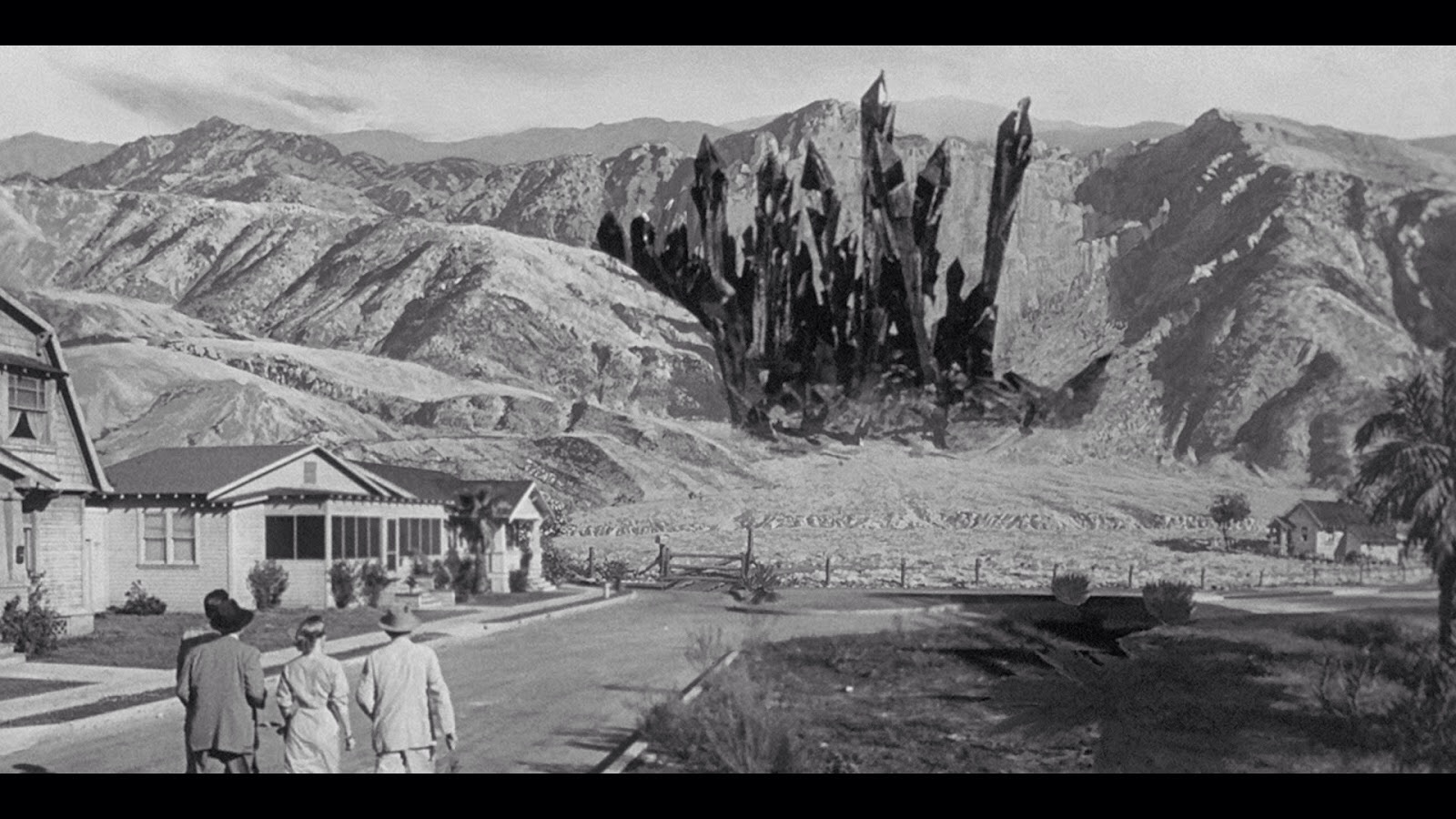 Here they come!
Here they come!
No effort is made to negotiate on either side. Grant with the help of a visiting professor (for once good for something) and the local newspaper proprietor figure it out. As much as Rocky likes water, Rocky does not like salt water. Okey-dokey! Now what? The Gulf of Mexico is too far away. The Pacific Ocean is in use. But, but, but the Morris Dam is just around the corner. Sprinkle all the salt shakers in town into the reservoir and then blow it up!
Everyone agrees this is a good idea. The fraternity brothers always like a big bang.
By this time higher authorities have been alerted and are arguing about whose KPIs cover the situation. Consultants are showing each other Power Point presentations about paper, scissors, and rock. Lawyers are amassing billed hours without uttering a word. Pollsters are drawing samples to interrogate. The Twit in Chief is playing golf. This is crisis management at its best.
The rocks keep coming, falling on people, animals, farms, but missing Republicans.
Without waiting for approval, Grant blows up the dam. Much congratulating follows. Edie falls into his arms. ‘Aw. shucks.’ mutters Grant. The End. Off camera the police arrest Grant for blowing up public property and turn him over to Homeland Security and their r-e-a-l-l-y big waterboard.
It is crisp and direct. The staging of the rocks is striking on a wide screen. The actors are solid, including some ever reliables, like Lee Tremayne and Trevor Bardette. Phil Harvey as the first victim is utterly convincing as an ordinary Joe doing his job. Edie Hart is luminous long before Peter Gunn came along.
Director Jack Arnold is credited as a writer here and his sure hand shows. Those who do not know Jack, should. Paul Frees supplies the narration and Troy Donahue makes a brief appearance.

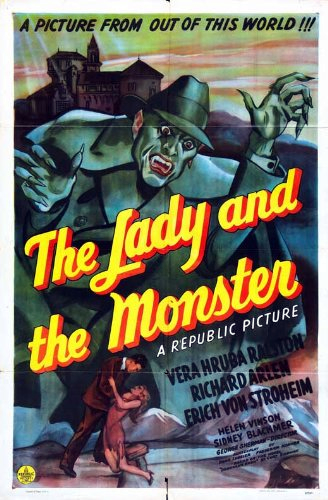

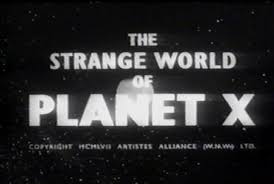
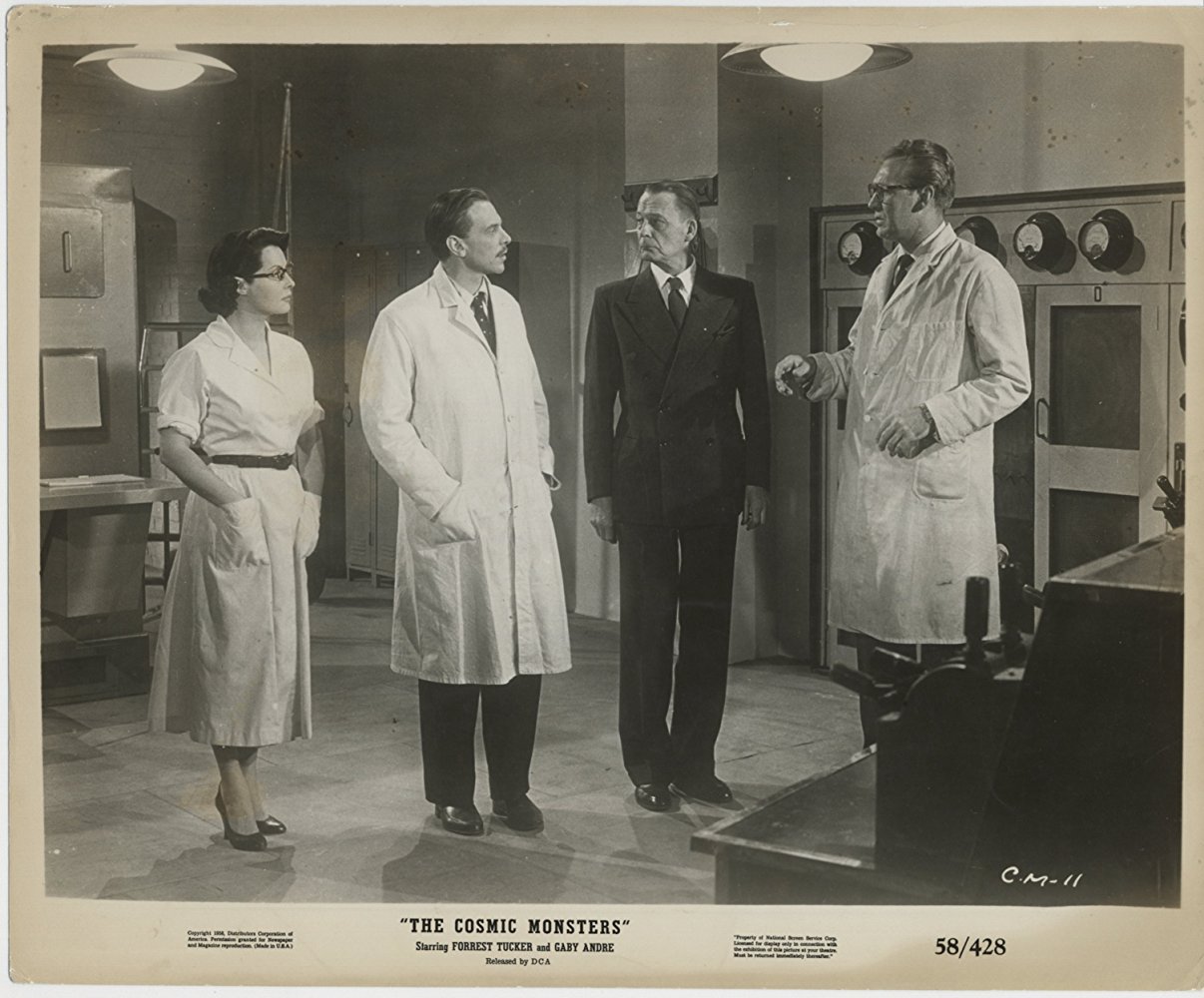 Sergeant O’Rourke bespectacled and lab coated on the far right.
Sergeant O’Rourke bespectacled and lab coated on the far right.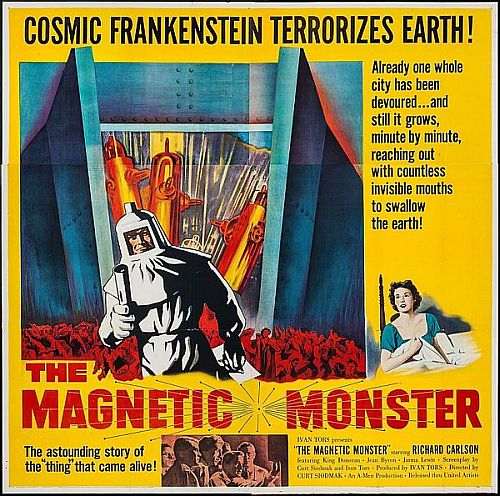 The lobby card implies a creature, one that came alive.
The lobby card implies a creature, one that came alive.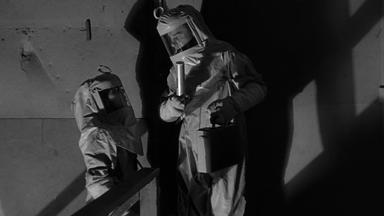
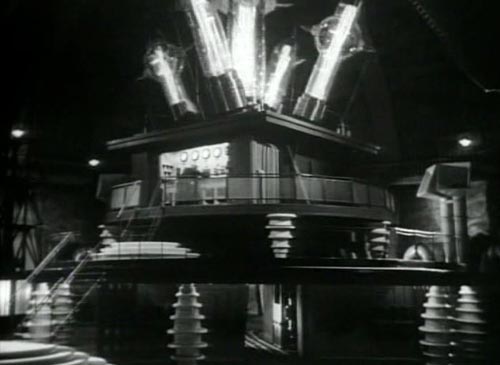 Nova Scotia, Light, and Power
Nova Scotia, Light, and Power
 Stanislav Lem, the prolific Polish Sy Fy writer. Do not blame him for this mish-mash.
Stanislav Lem, the prolific Polish Sy Fy writer. Do not blame him for this mish-mash.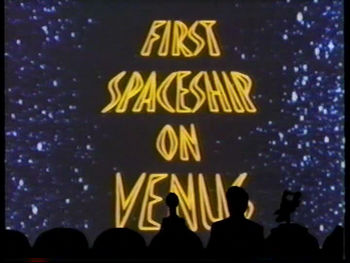
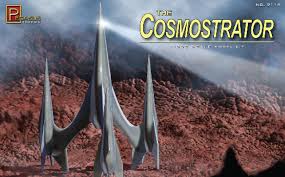 The Cosmostrator later did duty on Liberace’s piano.
The Cosmostrator later did duty on Liberace’s piano.
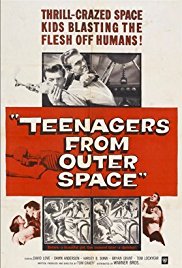 Acne attack!
Acne attack!
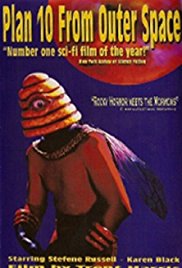


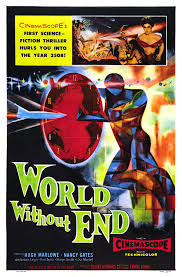 There are no scenes in the movie like that portrayed here. Yes, another misleading lobby card.
There are no scenes in the movie like that portrayed here. Yes, another misleading lobby card.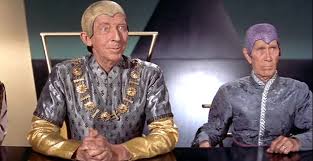 Note the headgear.
Note the headgear.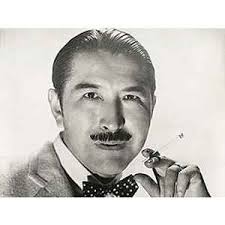 Al Vargas.
Al Vargas.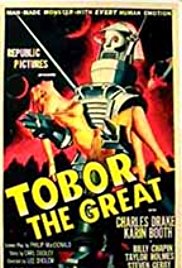 The usual misleading lobby card.
The usual misleading lobby card.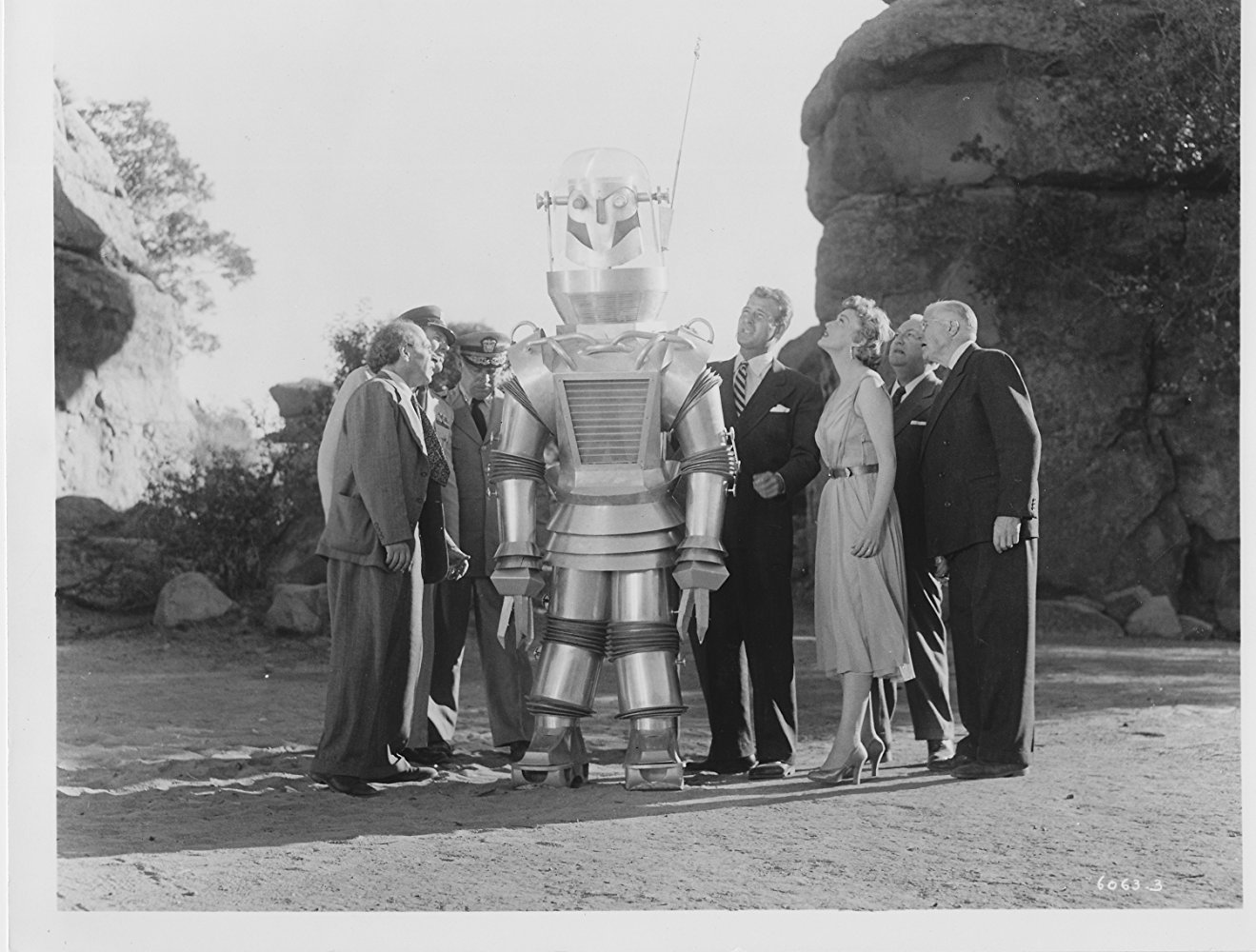 Tobor the Big
Tobor the Big